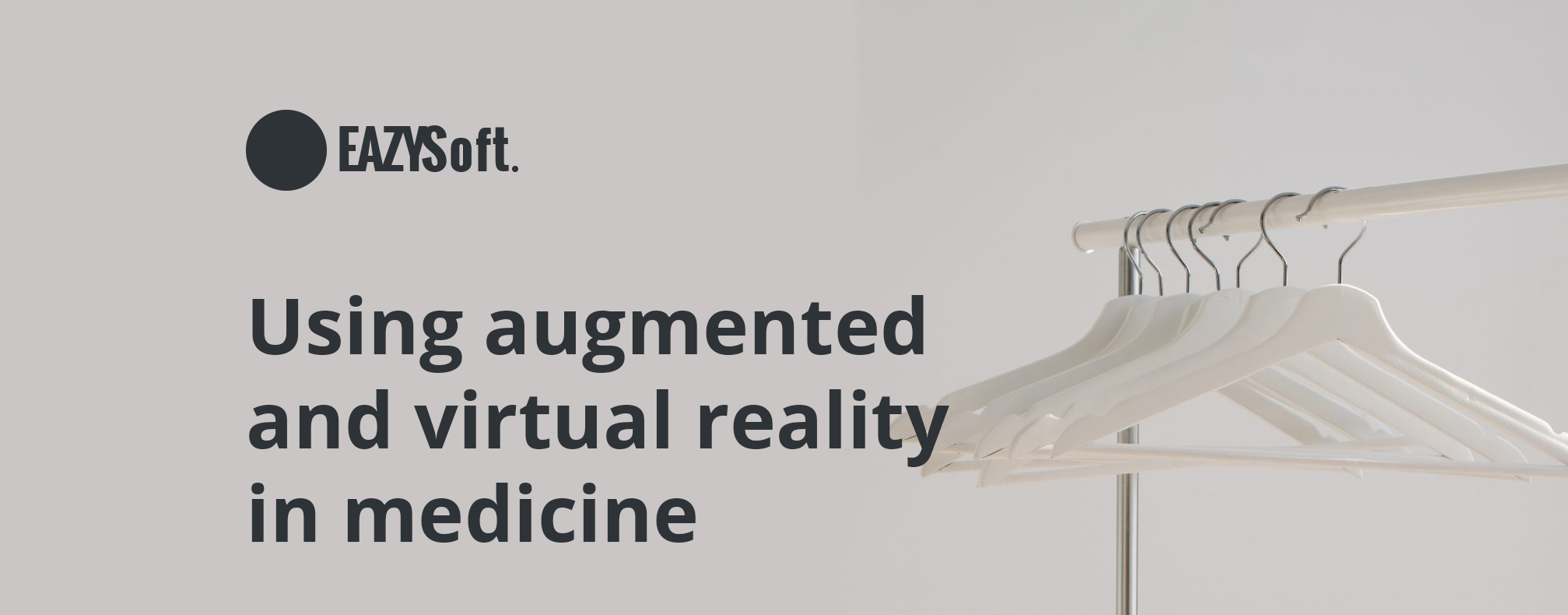
Using augmented and virtual reality in medicine
Information technology is slowly permeating to play a role in all spheres of life in order to improve and extend their possibilities. IT solutions can be used to optimize time-consuming tasks, helping users see what is missing in their current way of operating while also finding new, faster, more innovative ways to solve issues.
Healthcare is one of the sectors which has been slower to adopt IT solutions due to its complexity and dealing with sensitive information, but it is also one of the sectors that could benefit the most from ingenious uses of technology. A prime example of how modern healthcare systems can make use of innovations in tech to advance is by adopting augmented and virtual realities solutions for diagnostics, training, surgery, treatments, nursing and patient education purposes.
What Is Augmented Reality?
Put simply, Augmented Reality is a technology that adds value to the real world by overlaying and displaying real-time digital information and media, such as videos and 3D models, via the camera view of your smartphone, tablet, PC or via wearable tech such as a viewfinder or smart glasses.However this isn’t science fiction; AR is available right now and it’s improving all the time. In healthcare doctors and patients can use connected devices such as a smartphone or tablet to leverage this technology and add valuable data to their treatment, while the strides being made in connected lenses and glasses will make accessing this information even more seamless in the future.
What Is Virtual Reality?
Virtual Reality is certainly an evocative technology. It seems that the use of Virtual Reality as a tool has reached quite far and wide past few years. This is actually massive, and while we are only in the early phases of figuring out just how the use of VR accelerated a tremendous achievement. Although VR indeed is believed to mark its major portion in the gaming sector, there are several instances where VR has made some serious implications in the lives of people and tried to change the overall face of the healthcare segment. We can say Medical VR is enriched with endless possibilities and even when the area is freshly introduced there are already some great examples of VR embarking a positive effect on the lives of both patients and medical practitioners.
Using Virtual And Augmented Reality In Medical Diagnosis, Treatment And Therapy
New Opportunities in Surgery
For patients, Augmented Reality can significantly improve the quality of treatment they receive from their healthcare provider. For starters, the risks associated with minimally invasive surgery (which involves making a small incision in the patient’s skin and inserting medical instruments) can be reduced by keeping the most important information front and center for the surgeon.
Where previously this type of surgery required monitors in the operating room to display vital statistics and images being delivered by an endoscopic camera, thanks to AR a surgeon can now wear smart glasses during the procedure and stay focused on the task at hand, therefore minimizing mistakes and reducing the need to multitask more than is perhaps necessary.
Better Aftercare
AR technology can also help improve the management of a patient’s aftercare. Upon leaving hospital, a patient may be required to continue with certain treatments in order to successfully manage or eradicate a health issue. For older people in particular, it can become quite challenging to keep track of which medication to take and when to take it. Augmented Reality apps installed in smart glasses such as Google Glass can act as a digital healthcare assistant in reminding the patient to take their medicine at specific times or by encouraging them to eat better and exercise more.
Treating Autism
Diseases like Autism and Asperger’s syndrome are incurable uptill date. As of current situation, autism therapy includes in-person sessions with the doctor. But with an effective use of these sessions can be lessened to a good extent. Mobile VR actually helps investigate social interactions with autistic kids by including virtual characters.
Wearable tech like Oculus Rift can be used with individuals with autism to navigate virtual situations and help them develop life skills that can lead to independent living.
Pain management
For burn victims, for example, virtual reality can serve as a tool for distraction therapy. Pain impacts the senses through the pathways in the brain and nerves. VR video games can be used to distract a patient, alleviating some of the experience of pain during tasks that can be excruciating like wound care or physical therapy. The University of Washington’s game, SnowWorld, involves throwing snowballs at penguins while listening to Paul Simon and is immersive VR used specifically for pain control.
Technologies like AR and VR are finding an increasing number of homes in the medical industry. There are actually tonnes of projects, along with a varied commercial vendors offering solutions for medical practitioners, hospitals and the patients. These projects range from classical surgical planning to patient education as well.
